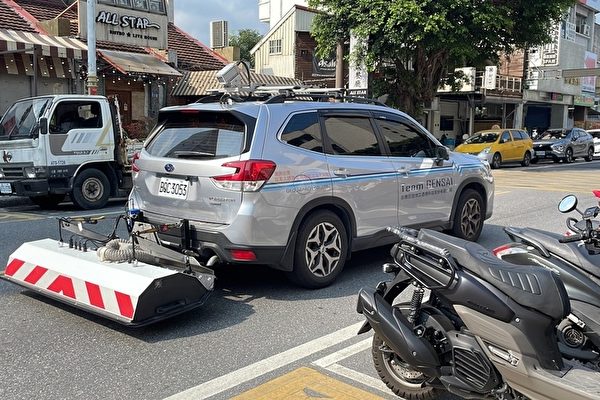On April 3, a strong earthquake struck Hualien, Taiwan, causing significant damage. Japanese company Geo Search Corporation, in collaboration with the Hualien City Government for the first time in 6 years, deployed personnel equipped with ground-penetrating radar inspection vehicles to conduct free inspections of road pipelines and pothole conditions in the city center in order to prevent further disasters from occurring.
Geo Search Corporation and a team of 5 personnel from Taiwan Cooperation Company set up the hole inspection vehicle (Skele-Car) and two manually operated ground-penetrating radar devices in front of the City Hall Square on April 17. They discussed the inspection scope with Hualien City Mayor Wei Chia-yen and Hualien County Councilor Wei Chia-hsien.
The President of Geo Search Corporation, Masatsugu Zatsuga, mentioned that after the strong earthquake in Hualien on February 6, 2018, they introduced a vehicle-mounted ground-penetrating radar inspection vehicle from Japan and spent about half a year completing the administrative procedures required for entry. Given the recent earthquake disaster situation in Hualien, drawing from their past experience, they were able to arrive in Taiwan in just 2 weeks this time.
Zatsuga stated that considering the demand for road surface inspection technology in Taiwan, they collaborated with Taiwan Cooperation Company to develop inspection instruments in Taiwan. They aimed to conduct investigations on the surrounding roads of earthquake-disaster areas, inspecting potholes and pipelines, and contributing to Taiwan’s recovery efforts.
This technology has been widely used in Japan for road inspections. Zatsuga mentioned that they hope to assist Taiwan in conducting more inspections in the future and are planning to install a second inspection vehicle to help identify more underground cavity issues in Taiwan.
The General Manager of Cooperation Company, Yao Xunqiao, explained that this inspection vehicle, tailored to Taiwan based on Japanese technology, consists of three equipment units, including one vehicle-mounted inspection car and two manually operated inspection vehicles.
Yao elaborated that the vehicle-mounted inspection car, equipped with a 1.8-meter-wide detector, is mounted at the rear of the vehicle and is not limited by vehicle speed. It emits radar waves underground, which are then transmitted back to monitoring devices inside the vehicle for immediate data analysis to identify potholes underground.
The radar waves can penetrate up to 3 meters underground, accurately recording the size of any cavity regardless of its size. After the initial large-scale survey by the inspection vehicle, the manually operated devices are deployed for a second precise examination, recording the size, location, and depth of the cavities to provide a reference basis for road repairs for the public sector.
Mayor Wei Chia-yen stated that after initial meetings with the Japanese engineering team, the focus of the inspections will prioritize areas with heavy seismic activity in the city center, such as Mingli Road and Beihan Street. Inspections are scheduled to commence next week, and if any underground dangers or problems are discovered, repairs will be expedited accordingly.

